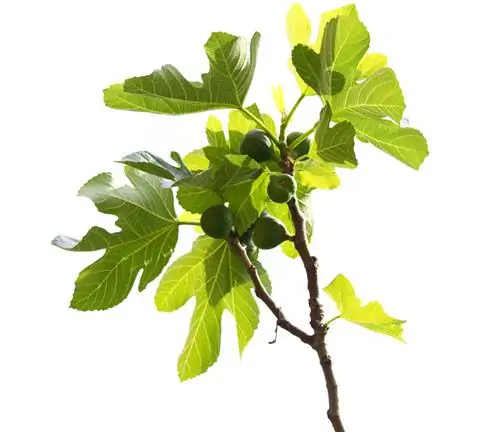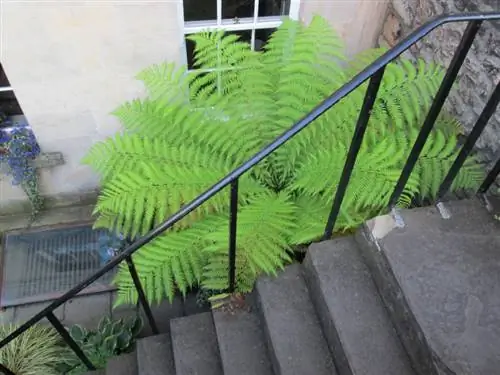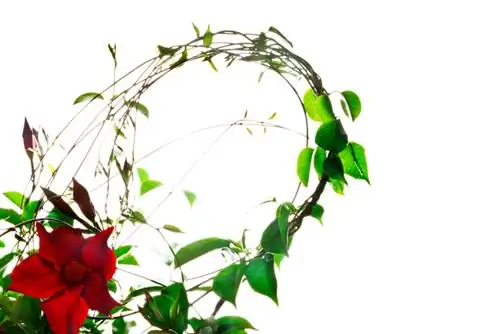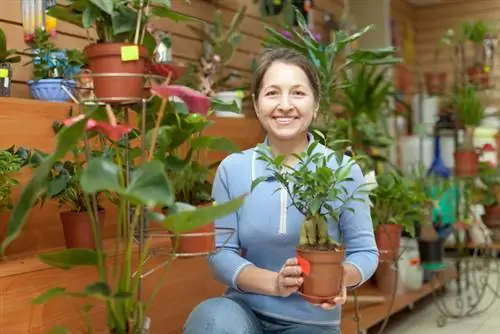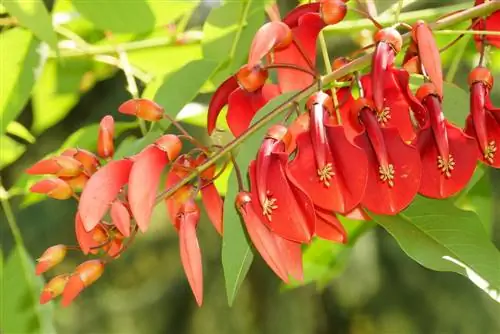- Author admin [email protected].
- Public 2023-12-16 16:46.
- Last modified 2025-01-23 11:20.
German globetrotters gave their name to the famous plant of African origin. The thick, decorative leaves inspired the name. Botanists know the baobab tree as Andansonia. This was given to her by the explorer Michel Adanson in 1749.

How do I care for a baobab tree as a houseplant?
The baobab tree as a houseplant prefers a sunny, warm location, permeable substrate such as sand and clay mixtures and moderate watering. Water young plants regularly, adult specimens lightly every 2 days (as needed). Fertilize between spring and autumn with special fertilizer or mineral s alts.
Using the houseplant
In contrast to the authentic-looking penny trees, the baobab belongs to the mallow family.
In Germany, the baobab tree is often presented on birthdays and anniversaries. Its leaves symbolize vitality and constant growth.
Last but not least, for this reason it still finds its way into many living rooms. Following the example of its wild relatives from Africa, the monkey tree produces small white flowers as a houseplant. Under optimal conditions, cucumber-like fruits develop.
Location
Due to its origin, the baobab tree is resistant to extreme climatic conditions. Constant changes between dry and rainy seasons are typical for Africa. Over time, this species eventually developed an impressive water storage system.
A sunny, warm spot is just right for the plant. The window sill also guarantees a constant incidence of light.
Attention:
- not directly above the heater
- no unhindered sunlight
- in winter at least 10 degrees Celsius
- fast growth: calculate enough space
Ideal soil and correct watering
There should be a very specific substrate for the flower pot. Sand and clay mixtures are ideal. Good water permeability guarantees lush growth. Under no circumstances is peat soil an option. To ensure sufficient nutrient content, we recommend adding a little mulch.
Make sure that the substrate is always very dry. Accordingly, the water requirements of the African beauty are limited. In contrast, successful cultivation of small baobab trees requires warm and moist soil.
Rule:
- young plants: water regularly
- adult baobab trees: water lightly every 2 days (as needed)
Caution: Overwatering
If the plant receives too much water, the roots quickly react with rot. As a result, the baobab tree dies quickly.
A trivet can be helpful. Excess water collects in it. You should remove this regularly.
It is always advisable to check the substrate before watering. Water is only required if the soil is very dry.
Fertilize
Targeted fertilization between spring and autumn can support growth. Liquid special fertilizer (€8.00 on Amazon) is suitable for this purpose. The baobab tree tolerates a small dose at intervals of 2 months.
Alternatively, you can use mineral s alts. After about 5 to 6 years of care, the baobab tree delights with a wonderful change in its appearance.
Its pretty appearance and easy-care properties are also popular with gardening beginners. As a container or potted plant, it delights hobby gardeners of every generation.
Tips & Tricks
This plant has proven itself useful for people who travel a lot. Its resilience and easy care make it indispensable as a houseplant.


